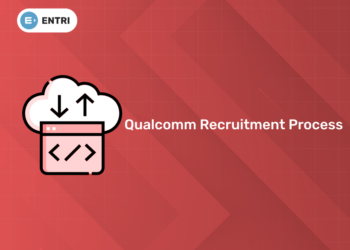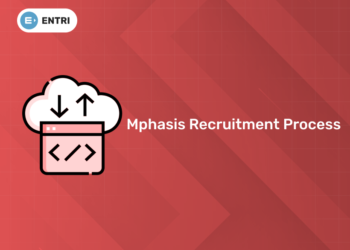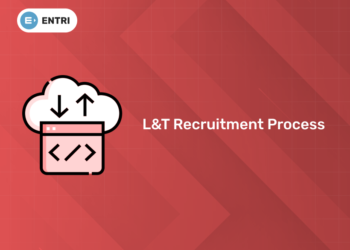Table of Contents
Introduction
Preparing for Google Data Science interviews can be a daunting task, especially when it comes to mastering the most commonly asked Google Data Science Interview Questions. Google, a top tech company, sets a high bar for its candidates, requiring them to be well-prepared.
In today’s data driven world, the role of a data scientist has become super important across industries and Google, a tech giant is no exception. This blog will provide you with a comprehensive guide to Google Data Science Interview Questions. We will cover why you should join Google, tips to prepare for the interview and some of the top interview questions you may face. We will also introduce you to Entri’s Data Science Course, a resource to help you prepare for your Google interview.
Why Join Google?
1: Which of the following algorithms is most suitable for classification tasks?
Google is known for its innovation, technology and employee satisfaction.Being a data scientist at Google is a dream for many. But the interview process is tough, you need to have deep understanding of various data science concepts, practical applications and problem solving skills to win Google Data Science Interview Questions Here are some reasons why you should join Google as a data scientist:
- Work on Latest Technologies: At Google, you will get to work on some of the most advanced data science projects in the world. From AI and machine learning to big data analytics, Google is the leader in technology innovation.
- Collaborative Environment: Google is a collaborative workplace where you can learn from some of the best minds in the industry. The company values teamwork and encourages cross functional collaboration.
- Career Growth and Development: Google offers numerous opportunities for career growth and development. With access to training programs, mentorship and networking events, you will continuously upskill and advance your career.
- Global Impact: As a Google data scientist, your work will have global impact. The data driven solutions you build will influence millions of users worldwide and make a difference in people’s lives.
- Competitive Compensation and Benefits: Google offers a competitive salary, stock options, and a comprehensive benefits package, ensuring you are well-compensated for your contributions.
 Start Coding Today! Enroll Now with Easy EMI Options.
Start Coding Today! Enroll Now with Easy EMI Options. 

Equip yourself with in-demand skills to land top-tier roles in the data-driven world.
Start Learning Now with EMI OptionsGoogle Interview Prep Tips
Preparing for a Google data science interview is a broad task. Here are some tips to get you started:
- Know the Job Role: Before you start preparing, make sure you know the job role you’re applying for. Google data scientists work on many projects including machine learning, predictive modeling and data analysis. Knowing the specifics of the role will help you focus your preparation.
- Brush up on Data Science Fundamentals: Google interviews test your knowledge of data science fundamentals including statistics, probability, machine learning algorithms and data manipulation. Make sure you’re comfortable with these.
- Practice Coding: Data science roles at Google require strong coding skills, especially in Python and R. Practice solving problems in these languages and focus on writing clean code.
- Work on Real World Projects: Google values candidates who can apply their knowledge to real world scenarios. Working on data science projects that solve practical problems will not only enhance your skills but also give you talking points for the interview.
- Mock Interviews: Do mock interviews with peers or mentors to simulate the interview experience. This will help you improve your communication skills, think on your feet and identify areas to improve.
- Prepare for Behavioral Questions: Google interviews often include behavioral questions to assess your cultural fit and problem solving approach. Be prepared to talk about your past experiences, challenges you faced and how you overcame them.
- Leverage Online Resources: Use online resources like Entri’s Data Science Course to strengthen your knowledge and skills. The course has comprehensive content, practice exercises and expert guidance to help you crack your Google interview.
Google Data Science Interview Questions and Answers
Now, let’s get into some of the top Google data science interview questions and answers:
1. What’s the difference between supervised and unsupervised learning?
Answer: In supervised learning, we train the model on a labeled dataset, where each input has a corresponding correct output. The model learns to map inputs to outputs and can be evaluated on test data. Unsupervised learning is on unlabeled data. The model tries to find patterns, clusters or relationships in the data with no guidance on what the outputs should be.
2. What is regularization and why is it important?
Answer: Regularization is a technique to prevent overfitting in machine learning models. It adds a penalty term to the loss function which discourages the model from fitting the training data too closely. Common regularization techniques are L1 (Lasso) and L2 (Ridge) regularization. By penalizing large coefficients regularization helps the model to generalize to new data.
3. What’s the difference between L1 and L2 regularization?
Answer: L1 regularization, also known as Lasso, adds the absolute value of the coefficients as a penalty to the loss function. It tends to create sparse models where some coefficients are exactly zero, effectively selecting a subset of features. L2 regularization, or Ridge, adds the square of the coefficients as a penalty. It tends to produce models with small but non-zero coefficients, resulting in smooth and stable models.
4. How does a decision tree work?
Answer: A decision tree is a non-parametric supervised learning algorithm for classification and regression. It splits the data into subsets based on the values of input features and creates a tree like structure. At each node the algorithm chooses the feature that best splits the data based on metrics like Gini impurity or information gain. The tree continues to split until it reaches a stopping criterion like max depth or min samples per leaf.
5. What are ensemble methods and why are they used?
Answer: Ensemble methods combine the predictions of multiple models to create a stronger overall model. The idea is that by aggregating the predictions of diverse models the ensemble can perform better and generalize better than any individual model. Popular ensemble methods are Bagging (e.g., Random Forest) and Boosting (e.g., XGBoost, AdaBoost).
6. What is the bias-variance tradeoff?
Answer: The bias-variance tradeoff is a fundamental concept in machine learning that describes the balance between two sources of error in a model: bias and variance.Assuming a model is too simple introduces bias, leading to underfitting. The model’s sensitivity to small fluctuations in the training data introduces variance, leading to overfitting. We want to find a model that minimizes both bias and variance to generalize well.
7. What is the curse of dimensionality?
Answer: The curse of dimensionality is all the problems that come with high dimensional data. As the number of features (dimensions) increases the volume of the feature space grows exponentially and the data becomes sparse. This sparsity makes it hard for models to find patterns and generalize well. Techniques like dimensionality reduction (e.g. PCA, t-SNE) are used to combat this.
8. What is cross-validation and why?
Answer: Cross-validation is a way to measure the generalizability of a machine learning model. It involves splitting the data into multiple subsets and training the model on some and testing on others. The process is repeated several times with different splits and the results are averaged to give a better estimate of the model’s performance. Cross-validation prevents overfitting and makes the model robust.
9. What is the difference between logistic regression and linear regression?
Answer: Linear regression predicts continuous values, logistic regression predicts binary outcomes (e.g. yes/no, true/false). Logistic regression uses the logistic function to model the probability of the binary outcome as a function of the input features. The output is a probability between 0 and 1 which can be thresholded to make a binary prediction.
10. What is a confusion matrix and how is it used?
Answer: A confusion matrix is a table that summarizes the performance of a classification model by comparing the predicted labels with the actual labels. It has four entries: True Positives (TP), True Negatives (TN), False Positives (FP), False Negatives (FN). The confusion matrix is used to calculate various performance metrics like accuracy, precision, recall and F1-score.
11. What is the difference between precision and recall?
Answer: Precision is the ratio of True Positives to the total number of positive predictions (TP / (TP + FP)). It measures the accuracy of positive predictions. Recall is the ratio of True Positives to the total number of actual positives (TP / (TP + FN)). It measures the model’s ability to find all positive instances. There is usually a tradeoff between precision and recall which is captured by the F1-score.
12. What is F1-score and why?
Answer: F1-score is the harmonic mean of precision and recall, it provides a single metric that balances both. It is useful when dealing with imbalanced datasets where one class is much more frequent than the other. F1-score ranges from 0 to 1, 1 is perfect precision and recall.
13. What’s a ROC curve and how do you read it?
Answer: A ROC (Receiver Operating Characteristic) curve is a graph of a classification model. It plots the True Positive Rate (Recall) vs the False Positive Rate at different thresholds. The area under the curve (AUC) is a measure of how well the model can tell positive from negative. A model with AUC of 1 is perfect, AUC of 0.5 is random.
14. What’s the purpose of the sigmoid function in logistic regression?
Answer: The sigmoid function is used in logistic regression to map the linear combination of input features to a probability between 0 and 1. The sigmoid function has an S shape, so it’s good for binary classification where the output is a probability.
15. What’s the difference between bagging and boosting?
Answer: Bagging (Bootstrap Aggregating) trains multiple models independently on different subsets of the training data and then averages their predictions to make the final prediction. Boosting trains models sequentially, with each model focusing on correcting the errors of the previous ones. Bagging reduces variance, boosting reduces bias.
16. What’s the purpose of dimensionality reduction and how do you do it?
Answer: Dimensionality reduction is to reduce the number of features in a dataset while retaining as much information as possible. This improves model performance, reduces computational complexity and mitigates the curse of dimensionality. Common techniques are Principal Component Analysis (PCA), t-Distributed Stochastic Neighbor Embedding (t-SNE), Linear Discriminant Analysis (LDA).
17. What are the types of machine learning algorithms?
Answer: We can broadly categorize machine learning algorithms into three types: Supervised Learning (e.g., linear regression, decision trees), Unsupervised Learning (e.g., k-means clustering, PCA), and Reinforcement Learning (e.g., Q-learning, deep Q-networks). Supervised learning uses labeled data, unsupervised learning uses unlabeled data, reinforcement learning learns from interactions with an environment.
18. How do you deal with missing data in a dataset?
Answer: Missing data can be handled in several ways depending on the context and the amount of missing data. Here are a few:
- Remove rows or columns with missing data (if the missing data is minimal).
- Imputation (fill in missing values with mean, median or mode).
- Use algorithms that can handle missing data directly, e.g. decision trees.
- Predictive modeling (use other features to predict and fill in the missing values).
19. What’s a p-value and how is it used in hypothesis testing?
Answer: A p-value is a measure of the evidence against the null hypothesis. It’s the probability of observing the data (or more extreme) if the null hypothesis is true. A low p-value (typically < 0.05) means strong evidence against the null hypothesis, so we reject it.
20. What is a confidence interval?
Answer: A confidence interval uses sample data to calculate a range of values that will contain the true population parameter with a certain level of confidence (e.g., 95%). It estimates the margin of error around the sample estimate. For example, with a 95% confidence interval, if you repeated the experiment 100 times, 95 of the intervals would contain the true population parameter.
21.What is a Type I error and Type II error?
Answer: A Type I error occurs when you reject the null hypothesis even though it is actually true. This error, also known as a false positive, means you conclude that an effect or relationship exists when it doesn’t. The probability of making a Type I error is denoted by α, which is usually set at 0.05.
A Type II error occurs when you fail to reject the null hypothesis even though it is actually false. This error, also known as a false negative, means you conclude that there is no effect or relationship when there actually is. The test has a probability of making a Type II error denoted by β, and the power of the test (1 – β) represents the probability of correctly rejecting a false null hypothesis.
22. What is overfitting and how can it be prevented?
Answer: Overfitting occurs when a machine learning model learns the training data too well, capturing noise and outliers instead of the underlying pattern. This results in a model that performs well on training data but poorly on unseen data.
To prevent overfitting:
- Use cross-validation to ensure the model generalizes well to unseen data.
- Apply regularization (e.g. L1 or L2) to penalize large coefficients.
- Use simpler models that are less prone to overfitting.
- Increase the size of the training dataset so the model has more examples to learn from.
- Prune decision trees to remove branches with little importance.
- Use dropout in neural networks to prevent co-adaptation of neurons.
23.What is a null hypothesis?
Answer: The null hypothesis is a statement that there is no effect or no difference in a particular experiment or observation. It’s a default assumption that any difference or effect you see in your data is due to chance.In hypothesis testing, the test examines the null hypothesis against the alternative hypothesis, which states that there is an effect or difference. The question is whether the data is sufficient to reject the null in favour of the alternative.
24. What is the Central Limit Theorem (CLT)?
Answer: The Central Limit Theorem (CLT) says that the distribution of the sample mean (or sum) of a large enough number of independent and identically distributed (i.i.d.) random variables, no matter what the original distribution is, will be approximately normal. This is the foundation of statistics because it allows us to use normal distribution based methods (like confidence intervals and hypothesis tests) even when the original data is not normal.
25. What is the difference between parametric and non-parametric models?
Answer: Parametric models assume the data follows a certain distribution and these models have a finite number of parameters that characterize the distribution (e.g., mean and variance in the case of normal distribution). Examples are linear regression, logistic regression and Naive Bayes. Parametric models are generally faster and require less data but might not perform well if the assumptions are wrong.
Non-parametric models make no assumptions about the underlying data distribution. They are more flexible and can adapt to the data without a pre-defined form. Examples are decision trees, k-nearest neighbors (KNN), support vector machines (SVM). Non-parametric models require more data and computational resources but are more robust to varying data patterns.
26. What are the assumptions in linear regression?
Answer:
- Linearity: The relationship between the input features and the output is linear.
- Independence: The observations are independent of each other.
- Homoscedasticity: The variance of the residuals (errors) is constant across all levels of the independent variables.
- Normality: The residuals of the model are normal.
- No multicollinearity: The independent variables are not highly correlated with each other.
Breaking these assumptions will give you an inaccurate model and unreliable predictions.
27. What is the difference between correlation and causation?
Answer: Two variables have a statistical relationship where changes in one variable associate with changes in the other variable. Correlation does not mean one variable causes the other to change.
Causation means one variable directly affects another, meaning changes in one variable bring about changes in the other. Correlation is a necessary condition for causation but not sufficient. Causation requires controlled experiments or longitudinal studies where confounding variables are controlled for.
Conclusion Of Google Data Science Interview Questions
To prepare for a Google data science interview you need to be dedicated, practice and know your data science basics. Familiarize yourself with common interview questions, brush up your technical skills and practice real world scenarios and you will increase your chances of success.
To top it off, consider enrolling in Entri’s Data Science Course. This course has comprehensive content, expert guidance and hands on experience to help you master data science and crack your Google interview. With right preparation and mindset you can get your dream job as a data scientist at Google.
Whether you are a seasoned data scientist or just starting out, the key is to keep learning and practicing. Good luck!
|
Are you aspiring for a booming career in IT? Then check out |
|||
Full Stack Developer Course |
Python Programming Course |
Data Science and Machine Learning Course |
Software Testing Course |
 Start Coding Today! Enroll Now with Easy EMI Options.
Start Coding Today! Enroll Now with Easy EMI Options. 

Equip yourself with in-demand skills to land top-tier roles in the data-driven world.
Start Learning Now with EMI OptionsFrequently Asked Questions
What will I face in a Google Data Science interview?
In a Google Data Science interview, you’ll encounter questions on data science fundamentals, coding challenges, real-world problem-solving, and behavioral questions to assess cultural fit. Expect to discuss your experience with statistical analysis, machine learning algorithms, data manipulation, and relevant projects.
How can I best prepare for a Google Data Science interview?
To prepare for a Google Data Science interview, focus on mastering data science fundamentals, practicing coding in Python or R, working on real-world projects, and conducting mock interviews. Leverage online courses, such as Entri’s Data Science Course, to enhance your knowledge and skills.
Why should I consider joining Google as a Data Scientist?
Google offers the opportunity to work on cutting-edge technologies, a collaborative environment, career growth, global impact, and competitive compensation. As a Google data scientist, you’ll contribute to innovative projects that can influence millions of users worldwide.
How important is it to practice coding for a Google Data Science interview?
Practicing coding is crucial for a Google Data Science interview, as you’ll be expected to solve problems using programming languages like Python or R. Writing clean, efficient code and being able to implement data science algorithms are key aspects of the technical interview process.
What resources can help me prepare for a Google Data Science interview?
In addition to studying data science concepts, consider enrolling in online courses like Entri’s Data Science Course. This course provides comprehensive content, practice exercises, and expert guidance to help you succeed in your Google interview.
How does Entri's Data Science Course help in preparing for a Google Data Science interview?
Entri’s Data Science Course offers structured learning paths, practical projects, and expert mentorship, making it an excellent resource for preparing for a Google Data Science interview. The course covers essential topics and provides hands-on experience, which is crucial for excelling in your interview.











